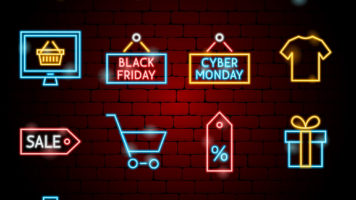This year, eDataSource added a powerful KPI to our inbox performance reporting platform: by domain, the percentage of “inactive” subscribers; i.e., those who haven’t opened an email from that sender in 90 days or more. (Note: We define inactivity as a subscriber that used to read a brand’s emails, but has since stopped reading those emails, and is still actively engaged with other senders’ emails.)
This metric has taken on new importance as ISPs have increasingly layered subscriber inactivity into their inbox filtering algorithms. That is to say, if you send email to subscribers who have long been disengaged from your email, that email is more and more likely to end up in the spam folder.
To prove the point, we took a look at twenty-one major retail brands whose names you know. It’s admittedly not a scientific survey, but it does represent a wide range of retail types and inbox performance. And it does allow us to illustrate the point that there’s an actionable relationship between subscriber inactivity levels and Inbox performance.
Stated most simply, here’s how this relationship looks for these twenty-one emailers. The story is hard to miss.
| For Brands With Inactivity Ratios: | Inbox Percentage |
| Over 60% | 75% |
| Under 60% | 89% |
Stated even more dramatically, of those brands we analyzed:
| Brand With The: | Inactivity Ratio | Inbox Percentage |
| Highest Inactivity Ratio | 88% | 29% |
| Lowest Inactivity Ratio | 34% | 94% |
Obviously, many diverse factors drive both of these metrics, but retailers shouldn’t fall back on the excuse that having a narrow and/or infrequently purchased assortment necessarily increases email subscriber inactivity, or vice versa, because neither has to be true.
So, what to do?
- Know your subscriber engagement metrics: That is, the inactivity ratio we report, and those your ESP provides about open/click/conversion segments of your email subscriber base.
- The keys to applying these relationships to inbox performance? Well-known best-practice strategies for minimizing subscriber inactivity and for managing audiences that do become inactive, including:
- Email relevance drivers: Consistent programming across waypoints of the subscriber/customer lifecycle; segmentation and targeting based on customer behavior, status, location and preference; optimizing contact frequency across customer engagement segments.
- Risk-reduction for inactive audiences: Audiences with no email engagement for 90-120 days or more should not be in the active mailing stream. Subscribers become disengaged for many reasons, some of which are beyond the control of even the most brilliant email marketer. Re-engaging such audiences is tough. Programs should be carefully metered, multi-touch sequences over a 2-3-week period, containing clear re-engagement CTAs and incentives in their subject lines. Other approaches include ECOA, with re-opt-in of refreshed email addresses; re-engagement messaging via postal mail, where possible; and modeling recent “re-engagers” (assuming data available) to identify and target look-a-likes among the dormant population.







